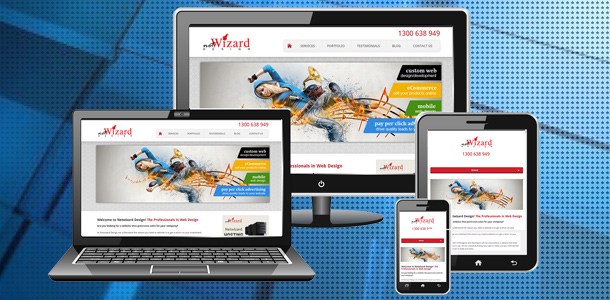Technical jargon can be difficult to understand for those who work outside of the IT industry. However, it is vital for business owners, managers, and marketing staff to take the time to fully comprehend the different types of web styles available today. Web design is arguably the most important tool in capturing the attention of prospective customers, whether you are selling products, services, or sharing knowledge about any particular subject. A well designed website can cause web traffic to explode, while a poorly designed one can cause it to cease altogether.
Responsive web design is a type of design that allows a web page to be viewed on multiple screens and devices. Rather than having to design multiple sites depending upon the type of device that is used, one site is created that then responds to a desktop, laptop, phone, or tablet. This allows multiple viewers to access the site. It also allows regular visitors to return to the site regardless of their location.
Along with multiple devices, responsive web design also uses media queries to resize content depending upon the size of the browser window. A viewer that chooses to minimize your webpage in order to view two windows at once can see all content in one easy-to-view location.
It is necessary for any type of web site to at least consider using responsive web design. Web surfers expect information to be available quickly and easily. They do not want to sift through content in order to find the items or information they seek. There are quite literally millions of websites in existence. Often, viewers will continue looking for sites that have the appearance and content they need. It is rare for a consumer to return to a site that they find confusing or frustrating in any way.
Beyond the size and scope of content, diversity in electronic devices is growing at an alarming rate. PC sales from 2012 are down from 2011 as more people choose tablets for their computing needs. Mobile phones are now standard choices for information gathering and shopping. What all of this means is that a company’s website must be able to be viewed from each device in a simple and concise way. Enter responsive web design, which makes this possible
Lastly, responsive web design can save a company a great deal of money. In the last five years, companies have invested endless resources in creating different sites for the various devices that continue to saturate the market. Responsive web design allows for one site, initially designed one time. Also, with responsive web design, companies do not have to put time and effort into designing apps for their various offerings. As many as 60 percent of tablet users have said that they would rather get information directly from a site than from an app, according to Pew Research. This news is a time and money-saver for companies all over the globe.


